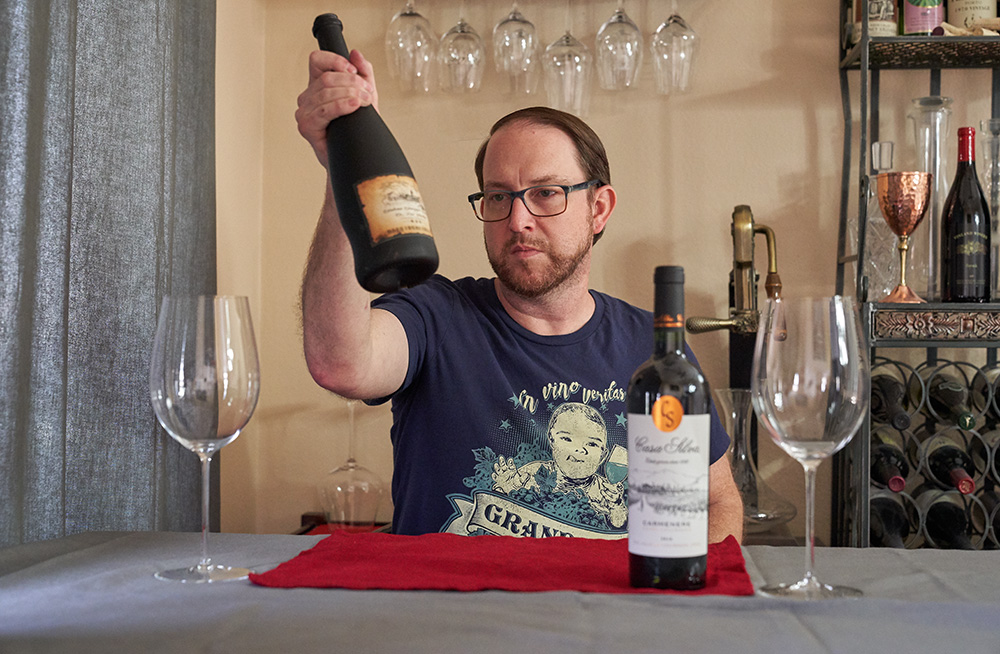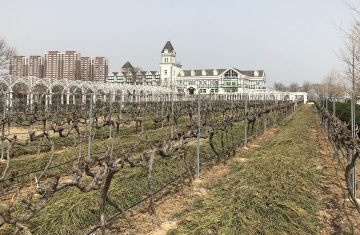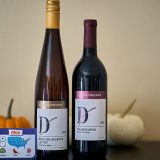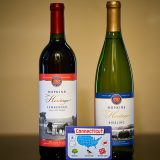This was a question that would pass through my mind from time to time. Is Cabernet Gernischt really the same as Carménère? Cabernet Gernischt had long been believed to be a nearly extinct form of Cabernet that was brought from France to China in the early 1900s. This certainly gives a nice mysterious story, and what bottle of wine doesn’t sell better with a cool backstory?
For a while, it was believed to be an ancient ancestor of Cabernet Franc. Then there was a time when it was believed to actually be Cabernet Franc. The name Cabernet Gernischt itself is believed to be a misspelling of its original name, Cabernet Gemischt, which translates from German as “mixed Cabernet”. This could possibly be due to the fact that these people weren’t entirely sure what Cabernet they had brought to China. So finally a DNA test was done in the last 20 years that proved Cabernet Gernishct and Carménère were the same.
I guess I can’t really dispute a DNA test, but it’s more fun to do a comparison taste test to find out for myself. Just as not all Syrahs or Cabernet Sauvignons taste the same, I wasn’t expecting these to taste identical, but maybe just similar enough to record in my own memory bank.
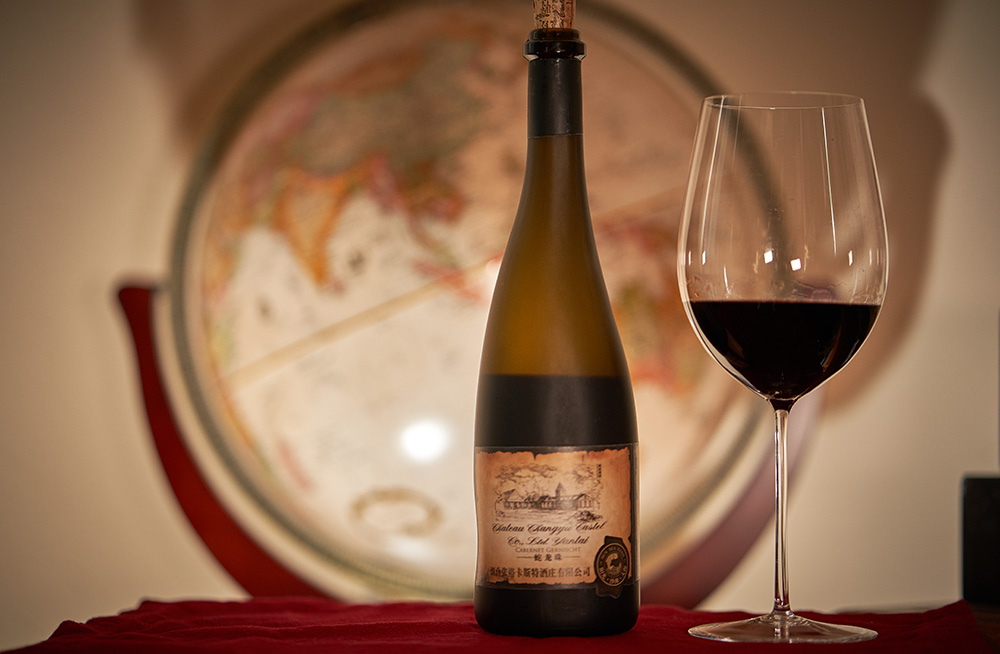
Back in late March, I traveled to Yantai (烟台) in northeast China to explore some of the wineries of the Shandong province (山东). This is the home area for Changyu Pioneer Wine (张裕), one of China’s oldest and largest wine companies. Though they have chateaus in other Chinese wine regions too, this is where it all began for them in 1892.
During my visit to their Chateau Changyu-Castel (张裕卡斯特酒庄) , I could see that they were testing out a large number of grapes to have a better understanding for what works the best in this terroir. It seems that at least for now, Cabernet Gernischt (蛇龙珠) is the flagship grape used in their Yantai area wines. At the end of their winery tour, I was given two different Cabernet Gernischt wines to try.
I purchased one of these two wines as well as another Cabernet Gernischt I did not try. The wine used for this comparison tasting was the second Cabernet Gernischt bottle I had yet to try. It came in a funky shaped bottle that I am assuming was made to look older and handblown. There was no direct vintage on the front of the bottle, and I have found that Chinese wines often do not use vintages. If they are abiding by wine standards, this would mean that the wine inside is blended from multiple vintages. I’m not convinced they are adhering to any set standards though.
Often times you see Chinese wines include phrases like “15 Year” or “10 Year” similar to port wines or whiskies. My guess is that since China is still a growing market for wines, they use this terminology to help their vendors know when to start selling a certain wine. This particular wine mentions in Chinese that it was bottled in 2009, and states a release timeline of 8 years. Considering I purchased the bottle in early 2018, this release timeline theory seems to make sense.
It’s aroma had an overwhelming amount of oak on the nose with a decent amount of darker berries and something herbal I still can’t place. These practice tastings are certainly helping me to see where I need to focus my attention on more. I’m not very good yet at deciphering herbal scents. The taste of this wine reminded me of very dried fruits mixed with dark chocolate. This wine contained very little tannin, lots of acid, and was actually quite similar to the Cabernet Gernischt I had tasted in Yantai.
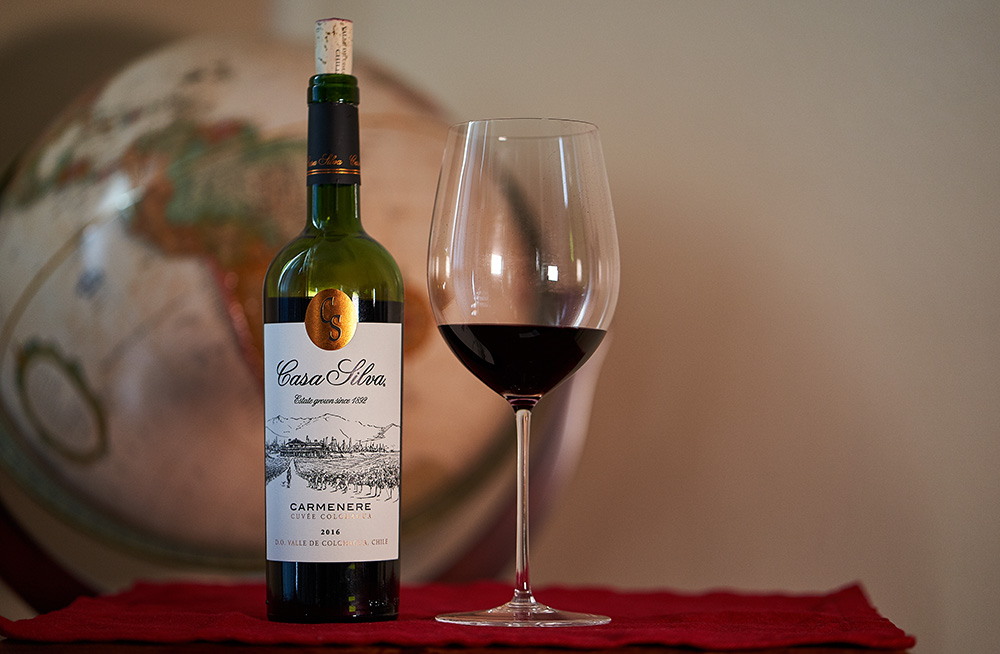
My second comparison wine was a 2016 Casa Silva Carmenere Colchagua Valley from Chile. A quick visual comparison shows that this one is a much brighter red and is what one would expect from a younger wine like this. It’s nose gives off very little oak, but an enormous amount of herbals and red fruits. That herbal aroma carried over to a slight vegetable taste and a bit of dark chocolate. Similar to the Chinese wine, there wasn’t too much tannin, but much less acid.
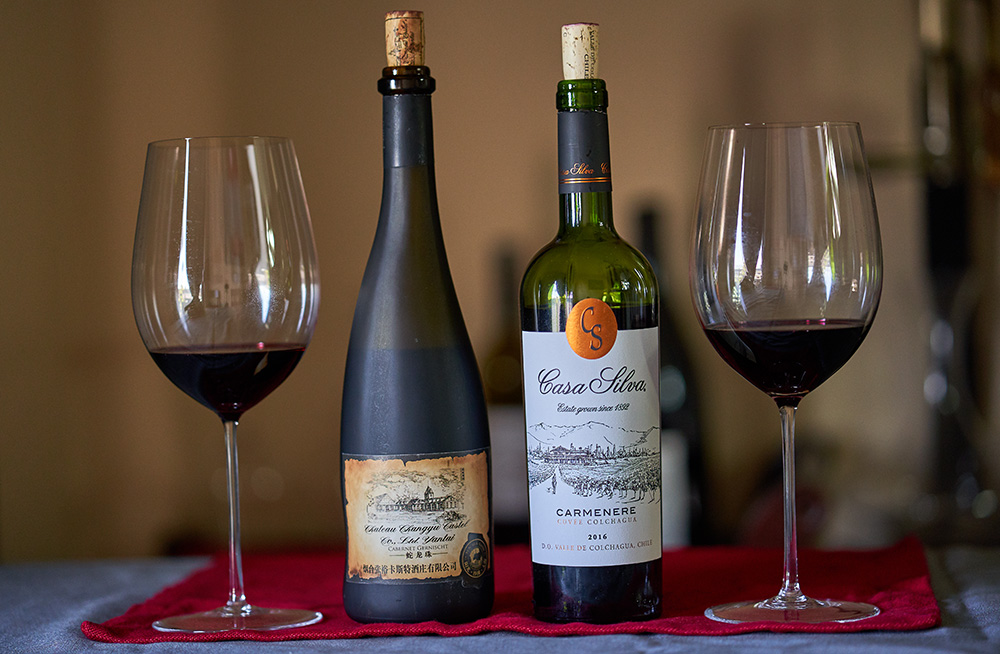
Overall, these two wines were similar once you got past the age difference and heavy oaking of the Chinese wine. Their tastes and smells were within the same realm as they both gave off dark fruits with a bunch of herbals. This new information was enough for me to better identify their shared characteristics in the future.
Check out my Son of Vin Youtube channel for videos from my wine comparisons.

